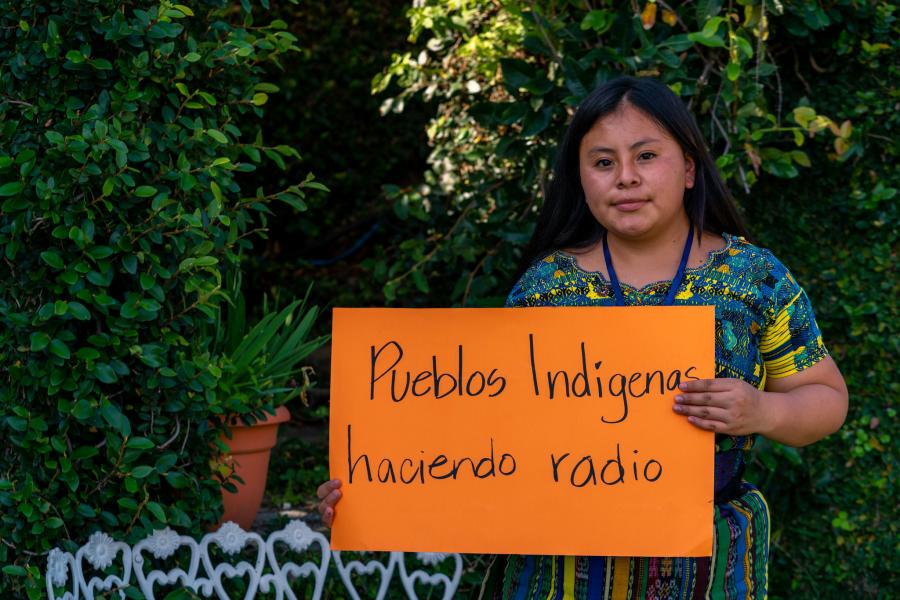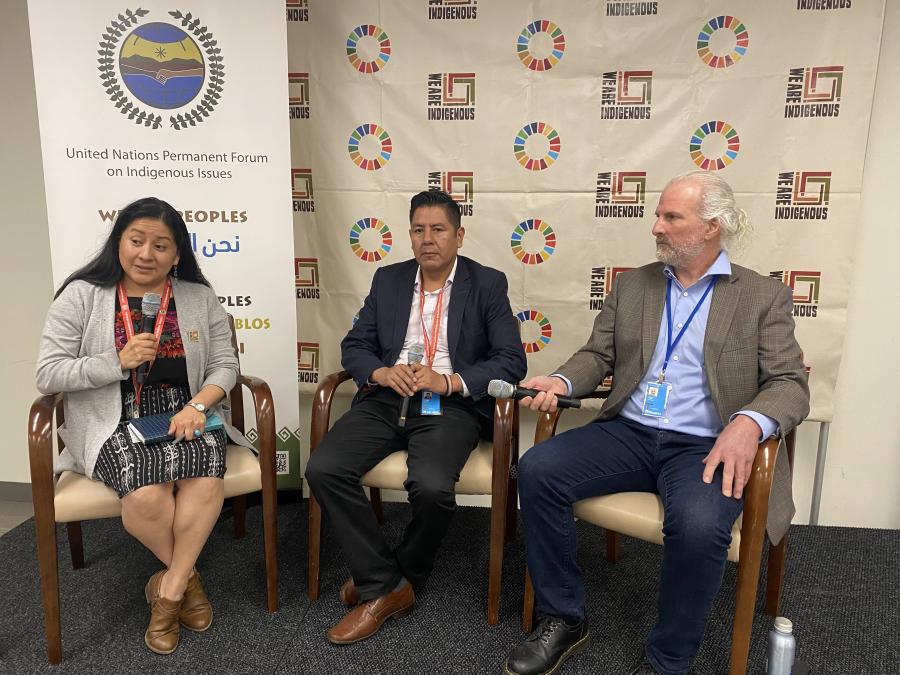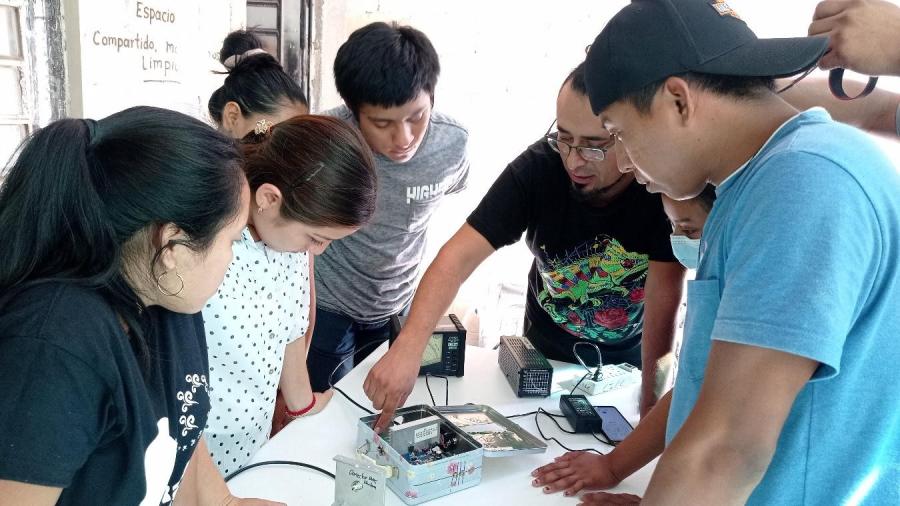The importance of community radio stations throughout Guatemala became especially apparent in the devastating aftermath of Hurricane Stan. On October 1, Hurricane Stan ravaged Guatemala, leaving 654 people dead, 828 people missing, and at least 120,000 homeless. The hurricane caused the most severe damage in the states of Sololá and San Marcos.
Community radio stations played an essential role not only in documenting the destruction caused by the hurricane, but also in helping their listeners obtain relief. The stations provided a vital link for many citizens, particularly those in remote and isolated areas who were otherwise cut off from mainstream modes of communication. In the immediate aftermath of the storm, community radio stations broadcasted critical information to indigenous people about where and how to obtain safe supplies of food, fresh water, and clothing.
As Maria Martin, founder of the Gracias Vida Center for Media, reported to the Knight Center for Journalism in the Americas at the University of Texas-Austin, "When disasters like the mudslides of Hurricane Stan strike, and when local government assistance may be slow in coming, this service is often the only lifeline that people have to communicate, provide help, and learn where more assistance is needed."
Radio Celajes, broadcasting from Tacaná in the department of San Marcos, remained on the air 24 hours a day during the disaster (under normal circumstances, most stations broadcast 12-16 hours a day). At 7:00 a.m. on October 4, the station received its first call reporting serious flooding due to the storm. In the days that followed, Radio Celajes received numerous calls for help, along with reports on the devastation in specific areas. With this information, the station was able to broadcast warnings to nearby communities.
Organizations such as the local Catholic Church also contacted the radio station to offer their services to the community and spread the word about available shelters. In a press release, Radio Celajes stated: "[radio] was the last beacon because through it all, members of the community and rescue efforts could request what was needed and also be informed of events as they occurred."
With fortuitous timing, Cultural Survival officially launched the first stage of the Guatemala Radio Project as Hurricane Stan was making landfall. This five-year project is a partnership between Cultural Survival and the network of 250 community radio stations throughout Guatemala. In addition to the vital role it has played in disaster relief, community radio is an essential conduit of news and information for indigenous peoples.
Approximately 60 percent of Guatemala's 14 million citizens are indigenous and speak a combined total of 24 different languages. Because community radio stations are extremely localized and broadcast in indigenous languages, they provide essential news, education, and public service programming to indigenous peoples who would otherwise have no access to media sources. Community radio is by far the most effective method of reaching culturally, linguistically, and geographically isolated members of society.
Community radio stations have also become critical components in the reconstruction of Guatemala's fledgling democracy. After a 36-year civil war that caused disproportionate destruction to indigenous communities, Guatemala's 1996 peace accords theoretically guaranteed access to local media for everyone, recognizing that the ability to receive and impart information and ideas through media is a basic human right.
While Guatemala's constitution ensures theoretical protection to media sources, the reality is that community radio stations are in danger. The government currently charges $28,000 for bandwidth—an excessively prohibitive sum for most community broadcasters. As a result, community radio stations are seeing their bandwidth increasingly usurped by religious, commercial, or other special interest groups.
To combat this threat, the Consejo Guatemalteco de Comunicacion Comunitaria (CGCC) was formed in 2001. The CGCC is an umbrella organization established to promote the implementation of reforms to Guatemala's Telecommunications law that would protect the community stations' bandwidth, and thus, right to broadcast.
Through the Guatemala Radio Project, Cultural Survival is working with Guatemala's six community radio associations (ACECSOGUA, AMECOS, ARCG, Mujb'ab'l yol , RCC, and ACCG), along with the CGCC, to achieve four major goals: reform the telecommunications law; strengthen the community radio stations' ability to generate news content; assist radio stations to acquire equipment; and build capacity so the project can become self-sustaining after five years.
ACECSOGUA and AMECOS will soon begin two- to three-month training programs in which eight representatives from the AMECOS radio association, located in Sololá, will be trained by the Nutzij women's media collective. The Nutzij collective, also based in Sololá, trains women in computer literacy and video production and offers community-level communication services. In Quetzaltenango, a volunteer newspaper journalist from California has already begun training volunteers from the ACECSOGUA radio association.
The Guatemala Radio Project is intended to be used as a model for the unification and empowerment of other indigenous groups internationally. As recent circumstances have shown, community radio stations are an invaluable medium for indigenous expression, and must be protected for the health and well-being of the citizens they serve.
Rachel Ballester is an intern, and Jenn Goodman is program and development assistant at Cultural Survival.
For further reading:
Knight Center for Journalism in the Americas (2005). Special Report: In Guatemala, Where Mudslides Buried Towns and Cut Communications, Community Radio Provides Important Links.



